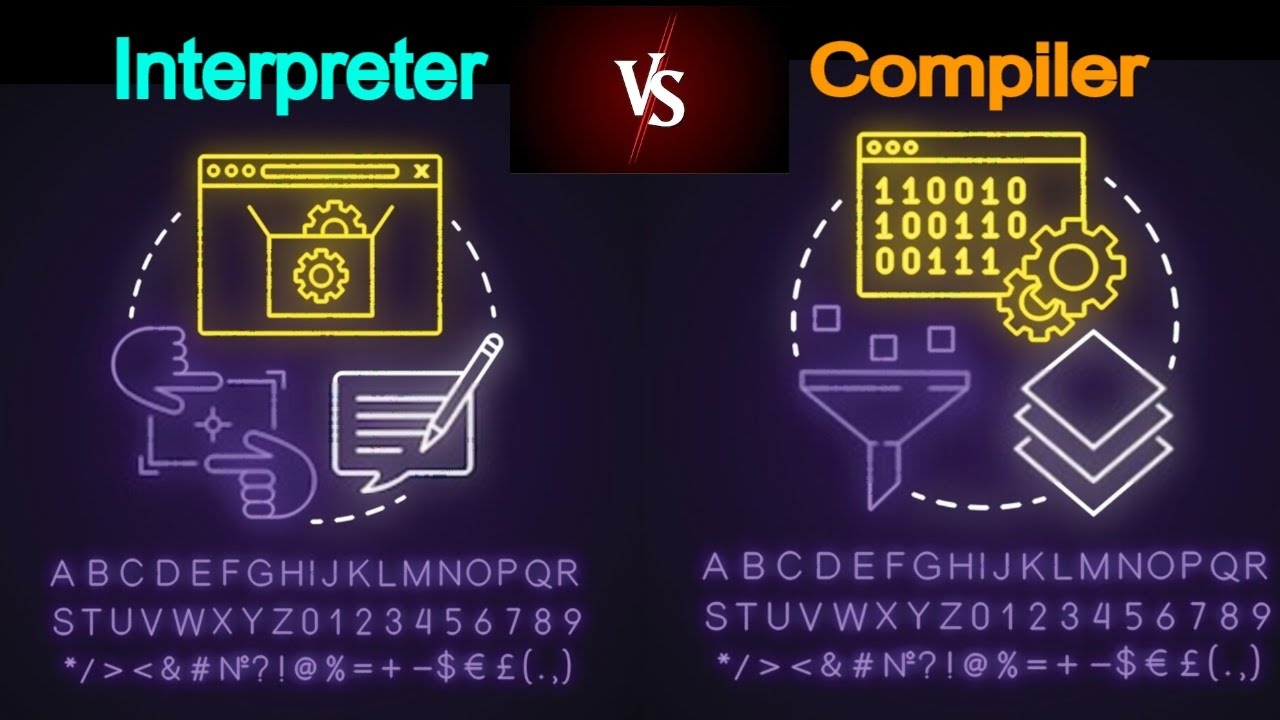Talking about programming languages, The difference between compiler and interpreters is essential to understand. Top software development agencies use them but have distinct characteristics and functions.
In this article, I will take you through the comprehensive overview of compilers and interpreters, their workings, and their key differences.
How a Compiler Works
A compiler is a software tool that translates the source code of a programming language into machine code that can be executed directly by the computer's hardware. It follows a series of stages known as the compilation process.
- Lexical analysis: The compiler analyzes the source code to identify and tokenize the various elements, such as keywords, operators, and identifiers.
- Syntax analysis: The compiler verifies the syntax of the source code against the language's grammar rules, creating a parse tree or an abstract syntax tree.
- Semantic analysis: The compiler performs semantic checks, ensuring the code adheres to the language's semantics and rules. It also resolves references and data types.
- Code generation: The compiler generates the equivalent machine code based on the analyzed and verified source code. This code is specific to the target hardware.
- Optimization: The compiler optimizes the generated code to improve performance, reduce memory usage, and enhance efficiency.
How an Interpreter Works
An interpreter is another language translator that executes the source code directly without prior translation to machine code. It follows a different process called interpretation.
- Lexical analysis: Similar to the compiler, the interpreter analyzes and tokenizes the source code.
- Syntax analysis: The interpreter checks the syntax and creates an internal representation of the code, such as a parse tree or an abstract syntax tree.
- Semantic analysis: The interpreter performs semantic checks and resolves references and data types.
- Execution: Instead of generating machine code, the interpreter executes the code directly, interpreting each statement and performing the corresponding operations.
Critical Differences Between Compilers and Interpreters
Now that we know how interpreter and compiler works, top software development agencies have different approaches for both. Let's dive into the aspects that set them apart.
While both compilers and interpreters serve the purpose of translating and executing code, they have several key differences:
| Aspect | Compiler | Interpreter |
| Compilation vs Interpretation | Converts the entire source code into machine code before execution. | Executes the source code line by line without prior compilation. |
| Execution Speed | Generally faster as the compiled code is directly executed. | Slower as the code is interpreted at runtime. |
| Memory Usage | Requires additional memory to store the compiled machine code. | Requires less memory as the code is not pre-compiled. |
| Portability and Platform Independence | Produces platform-dependent executables. | Generally platform-independent as the interpreter handles the execution. |
| Debugging and Error Handling | Debugging can be more challenging due to the absence of line-by-line execution. | Easier to debug as errors are encountered during runtime. |
Use Cases for Compilers and Interpreters
Let's get into the use cases for compilers and interpreters vary depending on the specific programming languages and project requirements.
Examples of languages that use compilers: C, C++, Java, and Rust are some of the languages that rely on compilers for translating source code into machine code.
Examples of languages that use interpreters: Python, Ruby, JavaScript, and Perl are popular languages that employ interpreters for code execution.
Choosing between a Compiler and an Interpreter: The choice between a compiler and an interpreter depends on various factors, such as the specific requirements of the project, performance needs, development workflow, and target platform.
Hybrid Approaches
In recent years, hybrid approaches combining elements of compilers and interpreters have emerged. The Just-in-time (JIT) compilation and Intermediate Representations (IR) are notable examples.
Just-in-time (JIT) compilation
JIT compilation combines the advantages of both compilation and interpretation. In this approach, the source code is initially interpreted, but certain portions of the code are dynamically compiled into machine code at runtime for improved performance. This allows for adaptive optimization and can bridge the gap between execution speed and flexibility.
Intermediate Representations (IR)
Some languages use an intermediate representation as an abstraction layer between the source code and the execution. This representation can be optimized and then either compiled or interpreted. IR allows flexibility in choosing between compilation and interpretation based on specific needs.
Pros and Cons of Hybrid Approaches
Hybrid approaches offer a balance between the benefits of compilers and interpreters.
· They provide performance optimizations while retaining the flexibility and ease of development associated with interpreters.
· Implementing and maintaining hybrid approaches can be complex, requiring careful design and additional development effort.
Conclusion
Understanding the difference between compilers and interpreters is crucial for software developers and programmers. Compilers translate source code into machine code, providing faster execution and efficient memory usage. On the other hand, interpreters execute code directly, allowing for easy debugging and platform independence.
By recognizing the trade-offs between the two approaches, top software development agencies can make informed decisions when choosing between compilers and interpreters based on their project requirements. Additionally, the emergence of hybrid strategies like JIT compilation and the use of intermediate representations opens up new possibilities for optimizing code execution.
By staying up-to-date with these developments, developers can harness the power of both compilers and interpreters to create efficient and effective software solutions.


